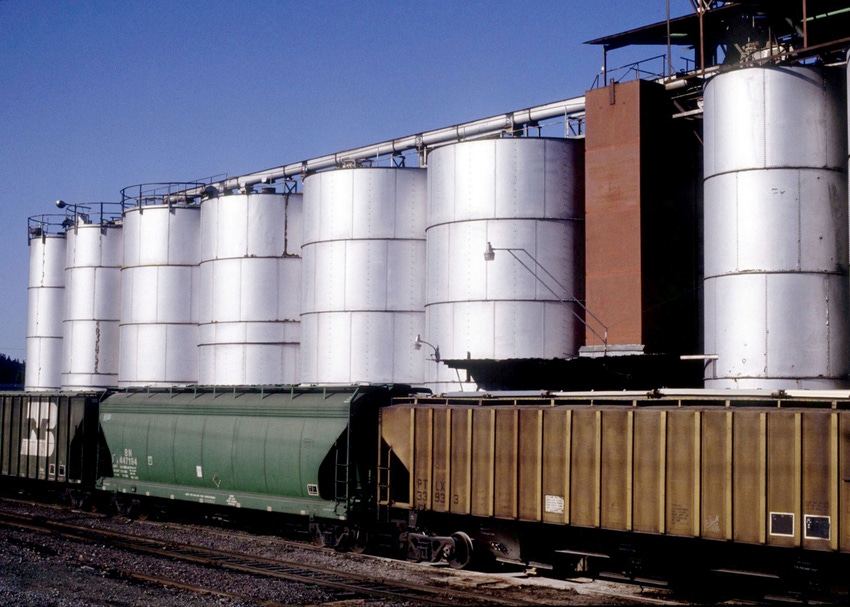New CoBank report details how, although number of ag cooperatives have declined, co-op influences have not dropped.

Despite the decline in the number of agricultural cooperatives, the influence of co‑ops in rural America is not shrinking. Yet, the changing landscape has brought new trends to the rural landscape, according to a new report from CoBank’s Knowledge Exchange division.
Although co-ops continue to consolidate to gain business efficiencies, management succession and employee recruitment are among the new factors driving consolidation, according to the new report. The report identifies key drivers of the long-term consolidation trend and includes perspectives from several co-op executives and other experts across the U.S.
“Co-ops have continued to consolidate even as the number of farms and farmers has stabilized,” said Dan Kowalski, vice president of the CoBank Knowledge Exchange Division. “That signals a transition from the defensive consolidations we’ve seen in the past to the offensive consolidations we’re seeing more recently.”
From 1977 to 2017, co‑op numbers fell by more than 3% annually. This further illustrates that “offensive” factors led to just as much, if not more, merger and acquisition (M&A) activity compared to “defensive” factors. The recent farm economy downturn also accelerated the consolidation from 1.2% in 2011 to more than 4% in 2016 and 2017.
Consolidation among farm cooperatives continues to mirror trends throughout production agriculture. Farming operations are growing larger, with average acreage of 444 acres in 2017, up from 418 acres 10 years earlier. In turn, the businesses that serve American farms are combining forces to compete and serve larger farmers better. Cooperatives often merge or consolidate to create economies of scale. Co-ops may reduce costs, add capital and acquire assets or more sophisticated technology to better serve their membership.
For instance, Keri Jacobs of Iowa State University recently found that despite consolidation of more than 80% of co‑ops in Iowa since 1979, the number of co‑op locations/facilities was up more than 20% over the same period. M&A activity may cause the closure or seasonalization of some facilities, but the larger co‑ops may also purchase or build other facilities in different locations, the report noted.
From 2003 to 2013, more than 70% of co‑op consolidation, on average, resulted from co‑ops merging with or being acquired by another co‑op, the report said. Beginning in 2014, the share of co‑ops that dissolved or went bankrupt surged. Over the four-year period from 2014 to 2017, nearly three out of every 10 co‑op consolidations resulted from bankruptcy or dissolution, CoBank added.
Current economic conditions make organizational efficiencies and synergies even more important. “Many farmers are under financial distress. Depressed incomes and tight margins can affect cooperative viability and make a merger look more attractive,” Kowalski said. “Many recent consolidations represent mergers of equally strong organizations, but in some cases, a stronger cooperative can take over a business that is suffering financially and inject capital to turn it around.”
No matter what drives it, consolidation has a profound impact on a cooperative and its stakeholders.
On the plus side, a strong and healthy co-op brings benefits to the community in the form of patronage dividends, equity retirements and capital investments.
While co-op numbers continue to shrink, the number of cooperative-owned facilities and locations seems to be steady or growing. In addition, the average co-op now employs more than 100 people, a 33% increase over the last 20 years.
“We expect consolidation among agricultural cooperatives to continue as the industry confronts persistent challenges in agricultural markets and the steady pressure to gain scale in pursuit of competitive advantage,” Kowalski said.
Sales volume is another indicator of how co‑ops have grown more diverse in size and capacity as a result of consolidation. In 1983, 90% of marketing co‑ops generated $15 million or less in sales. In 2017, roughly half of marketing co‑ops generated those sales in nominal terms. Perhaps the most notable change from 2000 to 2017 was an expansion in the share of co‑ops that generate $200-500 million in sales. The number of co‑ops in this sales range now exceeds those in each of the two ranges just below it ($50-100 million and $100‑200 million).
“Altogether, the data indicates that marketing co‑ops are more diverse in size than ever, but the larger co‑ops continue to control more of the volume,” CoBank said.
The report added that perhaps one of the most significant impacts of consolidation has been the increase in co‑ops’ average net income. From 1993 to 2017, average co‑op net income grew by a compound average growth rate (CAGR) of 9.7%, but income really began to surge in 2003. Between 2003 and 2017, net income grew at a 15.9% CAGR despite declines in income in 2016 and 2017.
“The boost in income has strengthened co‑op balance sheets, enabled co‑ops to better weather downturns and made capital investments possible for many,” the report said.
Cash patronage distributed from co‑ops to their farmer-owners also remained above average through the first few years of the farm economy downturn. “This provided somewhat of a hedge against commodity price declines,” the report explained. Patronage distribution fell 18% from the 2016 peak to 2017. In contrast, net farm income peaked in 2013 and fell 39% through 2017.
About the Author(s)
You May Also Like



.png?width=300&auto=webp&quality=80&disable=upscale)

